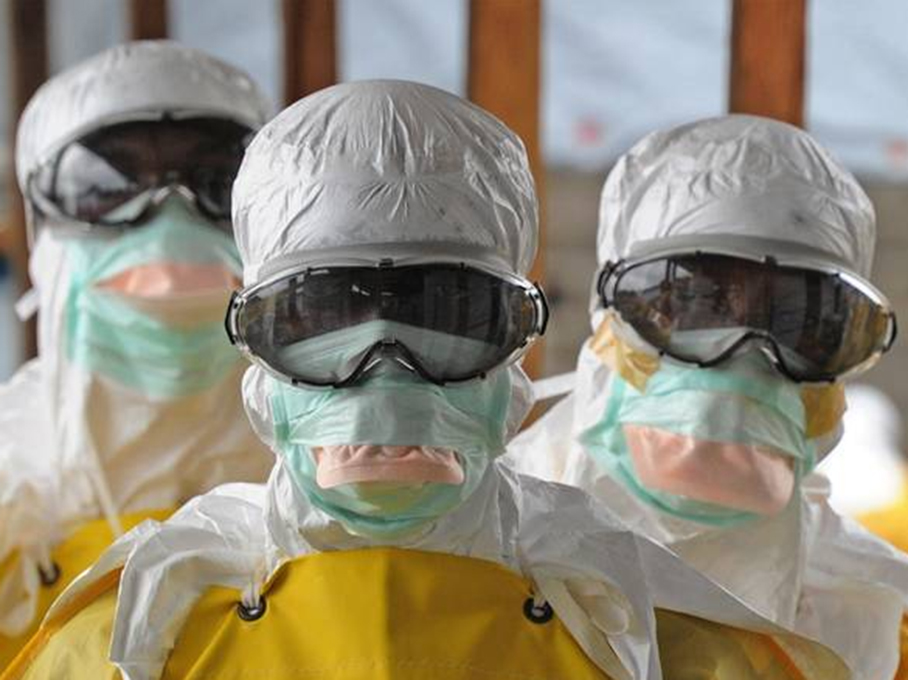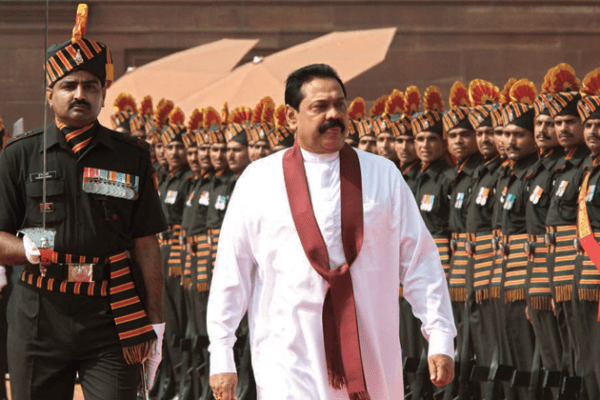The WHO’s most optimistic predictions see the end of the current Ebola outbreak not before the end of 2015. Azad Essa reports on what went so wrong.
I
“We don’t really know what Ebola has done in the past, and we don’t know what it might do in the future.”
—Richard Preston, The Hot Zone: The Terrifying True Story of the Origins of the Ebola Virus (December, 1994).
Almost a year later, nearly 8000 men, women and children have perished across West Africa. It is the biggest outbreak of the virus ever. Since the virus was first identified in the Democratic Republic of Congo in 1976, 25 outbreaks of Ebola have been documented, occurring mostly in Central Africa and the total death toll is not more than 1500.
And yet this current outbreak of the virus is still taking its toll. The rampage is not yet over.
Despite the flurry of recent international intervention, and reported improvements in Liberia, new cases continue to emerge in Sierra Leone and Guinea.
If the numbers are to be considered and current optimism is to be believed, the current outbreak will end at the end of 2015.
Indeed, understanding how and why this virus – known and understood by the medical fraternity for just about 40 years – has managed to shape a cascade of death and destruction – is still worth asking. The short and simple answer is that the international medical fraternity reacted too late. The long answer however, is more complex, and an awkward one: it points to a world system that is inherently racist, chauvinistic and egotistic.
It was in March 2014 that the medical charity, Doctors without Borders (MSF) described the outbreak as “unprecedented”.
“We are facing an epidemic of a magnitude never before seen in terms of the distribution of cases,” Mariano Lugli, a co-ordinator in Guinea for MSF, said at the time.
The NGO, known for its candid prognosis in humanitarian emergencies, said that it was particularly concerned about how fast the virus was spreading, its geographic reach, and the severe consequences if it reached urban areas.
At first, both West African nations and the World Health Organisation (WHO) downplayed the outbreak. On April 1, Gregory Hartl from WHO described the outbreak as “relatively small” and “sporadic”. At the time, the death toll in Guinea had reached 80 while, in Liberia, four people had died. MSF approached WHO and asked the global health body to reconsider their position. Their pleas were ignored.
II
“We still need to go through phase one trials [for a potential vaccine] to see there aren’t obvious side effects in humans and getting an idea of the dose. That will take a few months, and it might well be too late for this epidemic.”
—Peter Piot (The New Scientist, November 2014)
Though contracting Ebola is not as easy as it is often portrayed, a victim showing symptoms of the virus is a grave danger to those around them. It is a virus that not only kills people. It is a virus that also has the power to collapse health systems. In every outbreak, health workers and care-givers are at their most vulnerable, they are on the frontline. Before the spacesuits, the gloves and the chlorine sprays come out, it is usually the doctors, lab technicians and nurses who find themselves exposed and most at risk.
When the virus raised its ugly head in Guinea, Liberia and Sierra Leone, the local administrations stiffened with fright. None of the countries had the infrastructure, the manpower, or the experience to deal with it.
When it came to medical care, Guinea was well known for playing host to one of the lowest hospital bed per person ratios on the planet. In 2011, it had 0.3 beds per 1,000 people. When it came to human resources, there were 50 doctors serving Liberia, a country of more than 4 million. When it came to movement, these three countries were inherently connected; borders were porous, travel was plentiful.
Naturally, there was no way these dysfunctional health systems were going to ward off a virus that spread to new hosts even after death, during the burial process. In societies where years of civil war and rampant corruption had curtailed trust in authority, no one – be it official or civilian – were willing to take instructions.
It was, as Peter Piot, one of the scientists involved in identifying the virus in 1976, described: “the perfect storm”.
III
“For decades, Ebola haunted rural African villages like some mythic monster that every few years rose to demand a human sacrifice and then returned to its cave. It reached the West only in nightmare form, a Hollywood horror that makes eyes bleed and organs dissolve and doctors despair because they have no cure.”
—Time magazine (December 2014)
But he added a curious caveat when he told the Washington Post “this outbreak has a dynamic that’s unlike everything we’ve ever seen”. There is however little honesty about WHO’s self-appraisal. Like the WHO, Time magazine’s October 2014 analysis of the scale of the outbreak, blames “overpopulated urban areas” where the “virus can burn like fire through dry tinder.”
The same drivel underlines the opening lines of Time magazine’s December 2014 issue that bemoans the cruel irony of how paved roads and development facilitated an epidemic. In doing so, Time, like the WHO, reduces the failure to contain Ebola as an unfathomable irony of the cursed continent.
The disaster in West Africa however is not the work of an unforeseeable ‘dynamic’. It is a failure of leadership. West African nations fiddled as news of the outbreak broke, the African Union (whose mandate in times of humanitarian crises on the continent is as murky as ever) didn’t so much as deliberate on the matter, and the WHO opted to wait for the death toll to rise before it launched a decisive response.
The international media, despite catching up tremendously over the past two months were a colossal disappointment. For instance, between March and July, there was little inclination in the American media to mark Ebola as an important story. And when they did, it only became an exercise in hysterical narcissism.
It was only when two US health workers, working in Liberia, contracted the virus in July, that it suddenly had the markings of a possible international emergency.
They survived, but only because a special experimental drug was administered to them. Unsurprisingly, with the Western world now under threat, the WHO declared a health emergency in August. By then, at least 1700 people had already been infected in West Africa, of which 932 had died.
The insinuation that underdevelopment, poor road networks and sparsely populated areas would have better served Africans from the virus is reactionary. It even stinks of bigotry. And yet, even then, there is always more. In 2005, a young journalist named Peter Apps travelled to cover the Marburg outbreak in Angola. Marburg, a close cousin of Ebola, had already claimed at least 273 lives.
Marburg killed hard, and fast. Before the 2014-5 epidemic, the 2005 Marburg virus was known as the one of the deadliest filovirus-type epidemics in recorded history.
Unsurprisingly, similarities between the outbreak in Angola and the current Ebola epidemic in West Africa are most telling. War-torn areas, foreign travel advisories, tightening border control, panic in the capitals, and confusion over the source of the epidemic; it all reads the same.
Apps said that in the worst hit area of Uige in northern Angola, local people were refusing to bring their sick relatives in for treatment. Families would still nurse the sick, wash the dead and bury them.
“Meanwhile, they had become ever more afraid of the doctors, nurses, and international specialists who came in to help them. They were scared of the local hospital. Going there, they felt, meant death.” Almost a decade later, and it would seem that many of the lessons from the last biggest outbreak of a similar virus were either ignored or forgotten.
IV
“Maybe one day history will tell us that Ebola never won but rather governments failed to act, and that Ebola just simply walked in and met no resistance. Barring a few brave souls that fought the virus on their own and never relied on the government coming to help, the victor always writes the history what will Ebola write about mankind.”
—Paul Gilbert
Moreover, the fetishisation of Ebola as a man-hating visceral virus with no cure that tore at every capillary of human functionality, suggested that every attempt at adequate treatment or creation of a vaccine had been explored, attempted and failed. There may be no cure for Ebola, but not for the same reasons there isn’t a cure for HIV and AIDS.
There is no cure, because Ebola has never been seen in the same category as HIV or Malaria. And there may be legitimate reasons for the differential effort. Ebola cannot be compared to malaria or HIV/Aids, the two biggest killers on the continent. WHO said in 2013 that 460,000 African children had not reached their fifth birthday because of malaria.
Peter Piot told the New Scientist that Ebola has never been a public health issue. In other words, it has never affected enough people to warrant such intense effort. Read another way, it has never affected the Western world for treatment to be developed. Or interpreted a third way, it wasn’t deemed as profitable, economically viable to find a solution for some Africans hidden faraway in the jungle. Even then, Africans can accept that a bucketful of tropical diseases exist and vaccines take time to develop.
But it is in the passive approach to African life that remains the biggest insult in this story. There is no accountability, no leadership, no galvanised international effort. The anxiety over the delayed development of a vaccine or no vaccine is erroneous when Westerners hold first priority over experimental drugs.
Here, every ounce of human dignity was stolen by false debates. Those suffering from Ebola need care – aggressive fluid and electrolyte support – they needed the practice of medicine, not necessarily medicines, as David Kroll wrote in Forbes Magazine. By the end of 2014, some 7905 people had died because of Ebola, with 99% of the deaths in Liberia, Guinea and Sierra Leone. This incudes more than 360 African health workers who died doing their jobs.
To paint Ebola as a masked villain in a world of well-intentioned health systems, is not only misleading, it is a lie.














